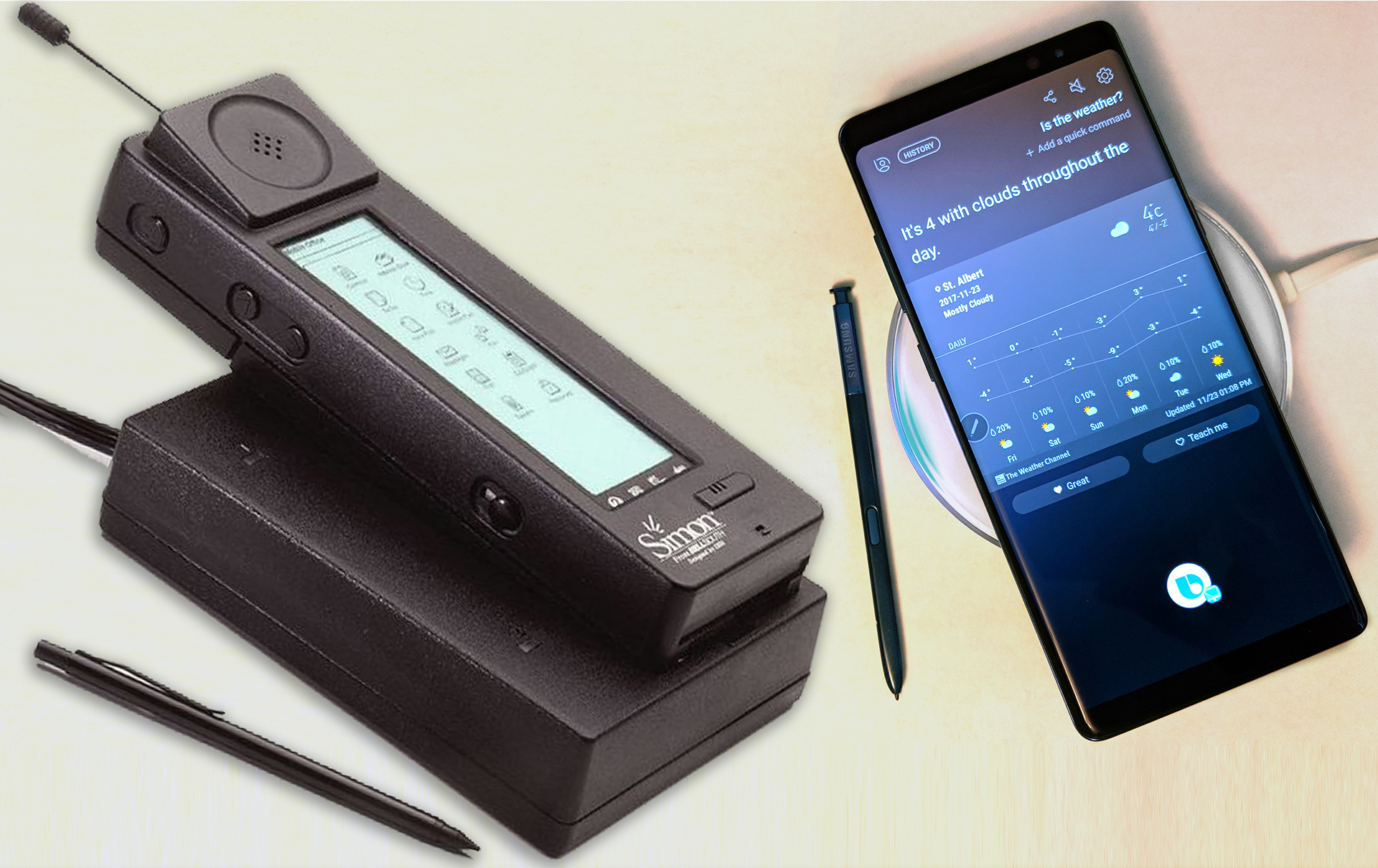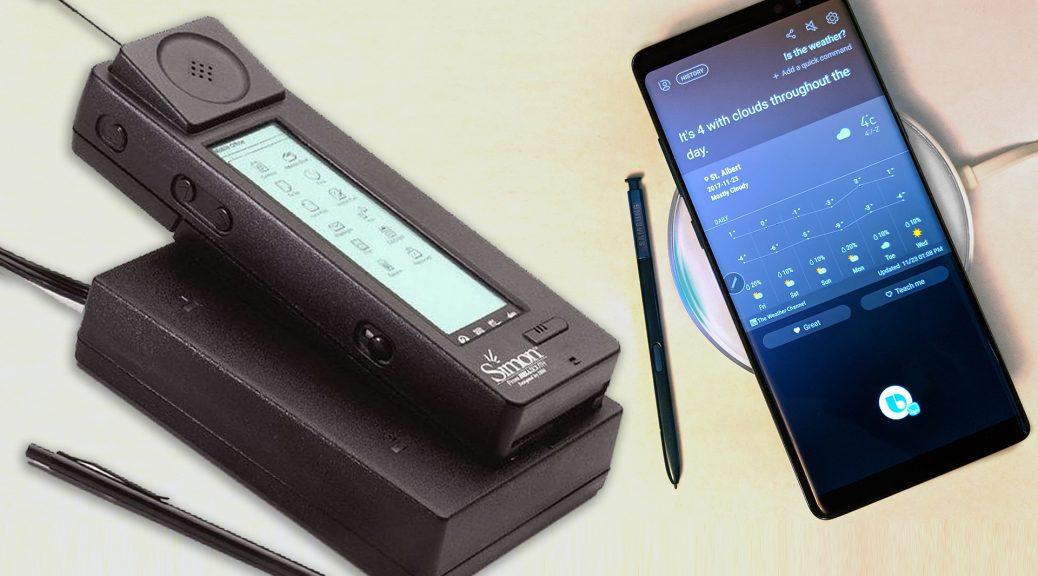Today is the 25th anniversary of the smartphone. Although traditional cell phones launched 40 years ago, the Simon Personal Communicator from IBM, unveiled at COMDEX Las Vegas 1992, featured touchscreen, stylus and could send and receive faxes, e-mails, and cellular pages.

It also ran apps like address book, calendar, appointment scheduler, calculator, world time clock, electronic notepad, handwritten annotations, and standard and predictive stylus input screen keyboards. It could be updated or loaded with new apps via a PCMCIA card.
Built by Mitsubishi and available through BellSouth in the US, the Simon Personal Communicator preceded the “smartphone” designation, as we know it today, by several years. It also predated the first iPhone by 15 years.
It didn’t have a web browser either, running on Datalight’s ROM-DOS. But the combination of mobile phone with PDA functionality and apps like maps and stocks qualified it as a smartphone setting standards for today’s phones.
Peter Jarich, Technology Analyst at GlobalData, comments: “According to our research, well over 90 percent of mobile handset sales come from smartphones, so it’s easy to take them for granted.
At public launch it cost $1099 USD ($1,397 CDN) outright or $899 USD ($1,144 CDN) with a plan and weighed 510 grams compared to the recently launched, also stylus equipped, Samsung Galaxy Note 8 at 195 grams retailing for $1,300 outright or $300 with two-year plan.
Off course you get a lot more with today’s smartphones, not to mention a slew of onboard cameras, with optical lens stabilization. The storage on the Note 8 beats the Simon by a factour of 64,000, 147 in processing speeds and 400 per cent more screen pixel density.
Jarich concludes: “Like cars and PCs, where nominal pricing remains somewhat constant but features improve over time, smartphones continually get better – and people are continually willing to pay for them.”

